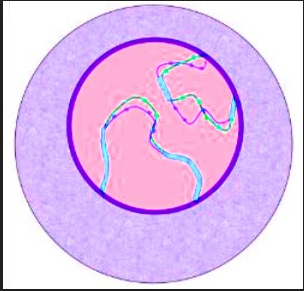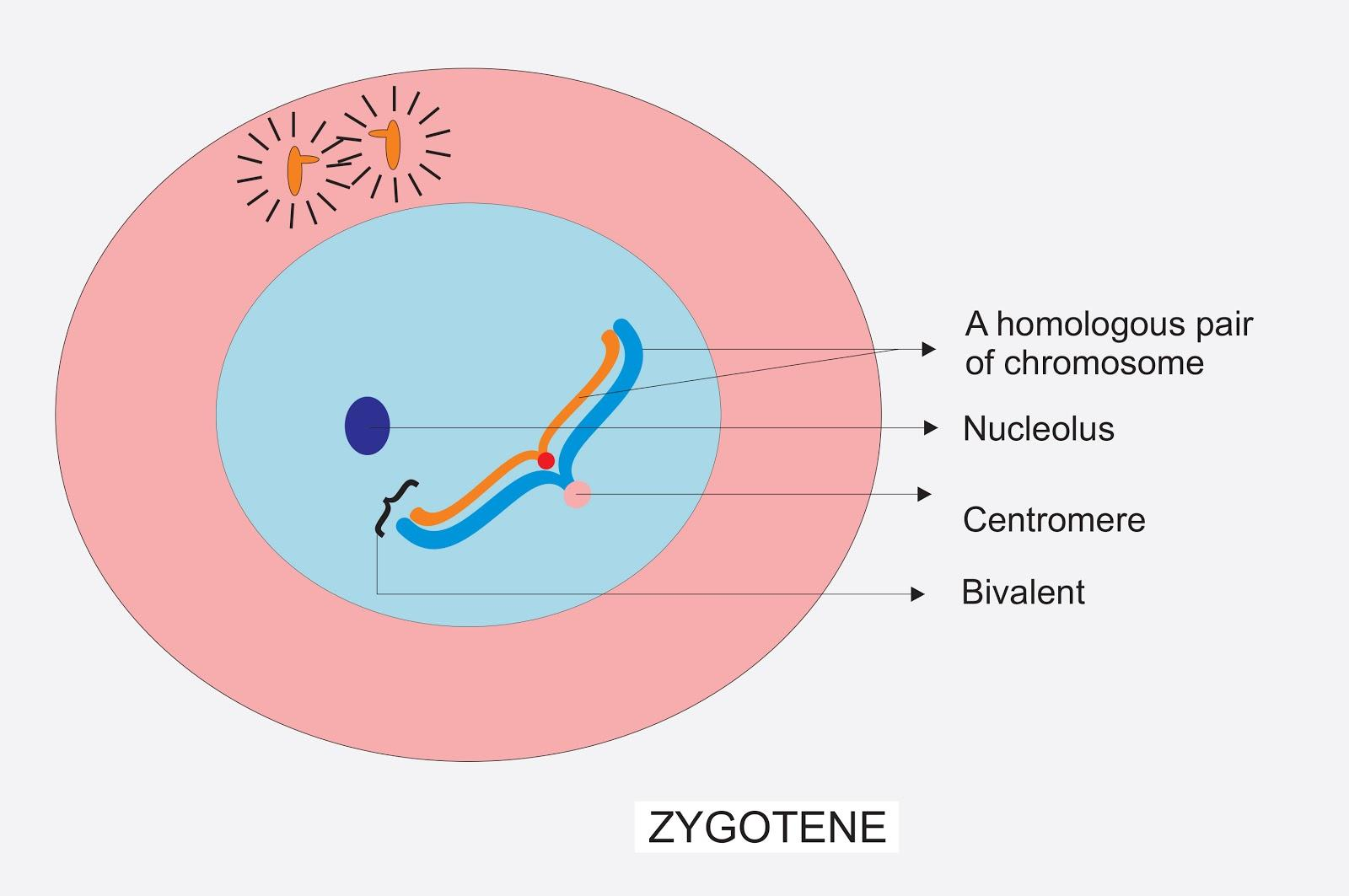
Sketch, label and describe zygotene.
Answer
398.4k+ views
Hint: This stage is a part of the stage prophase in meiosis, and is followed by leptotene, during which homologous chromosomes start to pair.
Complete answer:
Zygotene is the second stage of the prophase of meiosis, following leptotene, during which homologous chromosomes start to pair. It is a substage of meiosis where synapsis between homologous chromosomes starts. This synapsis can form up and down the chromosomes to make various points of contact called 'synaptonemal complex', coiling of chromatin.

Meiosis is a form of cell division that gives rise to genetically diverse sex cells or gametes. It comprises two successive nuclear divisions namely meiosis l and meiosis ll.
Meiosis I comprises four stages: prophase l, metaphase l, anaphase l, and telophase l. Prophase l is the very first stage of meiosis I and it contains the following sub-stages: leptotene, zygotene, pachytene, diplotene, and diakinesis.
The zygotene is the prophase I stage that follows after leptotene and then pachytene. Before zygotene, the chromosomes start to condense into long strands inside the nucleus and the chromosomes appear threadlike. Zygotene is that phase wherein the homologous chromosomes pair or come together in the synapse. The pairing of homologous chromosomes is called synapsis and is facilitated by the synaptonemal complex.
The pairing is zipper-like in fashion. At any part of the chromosomes, the pairing may start, e.g., near the end of the centromere. The pairing is also particular, i.e., homologous chromosomes that come in pairs must be of equal length and have the same centromere position. The paired chromosomes are termed bivalent or tetrad chromosomes.
Note:
-The term zygotene is derived from Greek words that mean paired threads.
-The zygotene stage is also described as a bouquet stage since the telomeres cluster at one end of the nucleus. It is also known as zygonema.

Complete answer:
Zygotene is the second stage of the prophase of meiosis, following leptotene, during which homologous chromosomes start to pair. It is a substage of meiosis where synapsis between homologous chromosomes starts. This synapsis can form up and down the chromosomes to make various points of contact called 'synaptonemal complex', coiling of chromatin.

Meiosis is a form of cell division that gives rise to genetically diverse sex cells or gametes. It comprises two successive nuclear divisions namely meiosis l and meiosis ll.
Meiosis I comprises four stages: prophase l, metaphase l, anaphase l, and telophase l. Prophase l is the very first stage of meiosis I and it contains the following sub-stages: leptotene, zygotene, pachytene, diplotene, and diakinesis.
The zygotene is the prophase I stage that follows after leptotene and then pachytene. Before zygotene, the chromosomes start to condense into long strands inside the nucleus and the chromosomes appear threadlike. Zygotene is that phase wherein the homologous chromosomes pair or come together in the synapse. The pairing of homologous chromosomes is called synapsis and is facilitated by the synaptonemal complex.
The pairing is zipper-like in fashion. At any part of the chromosomes, the pairing may start, e.g., near the end of the centromere. The pairing is also particular, i.e., homologous chromosomes that come in pairs must be of equal length and have the same centromere position. The paired chromosomes are termed bivalent or tetrad chromosomes.
Note:
-The term zygotene is derived from Greek words that mean paired threads.
-The zygotene stage is also described as a bouquet stage since the telomeres cluster at one end of the nucleus. It is also known as zygonema.

Recently Updated Pages
Can anyone list 10 advantages and disadvantages of friction

What are the Components of Financial System?

How do you arrange NH4 + BF3 H2O C2H2 in increasing class 11 chemistry CBSE

Is H mCT and q mCT the same thing If so which is more class 11 chemistry CBSE

What are the possible quantum number for the last outermost class 11 chemistry CBSE

Is C2 paramagnetic or diamagnetic class 11 chemistry CBSE

Trending doubts
Which is not a source of freshwater 1 Glaciers and class 11 chemistry CBSE

10 examples of friction in our daily life

The correct order of melting point of 14th group elements class 11 chemistry CBSE

Difference Between Prokaryotic Cells and Eukaryotic Cells

One Metric ton is equal to kg A 10000 B 1000 C 100 class 11 physics CBSE

What is the specific heat capacity of ice water and class 11 physics CBSE




